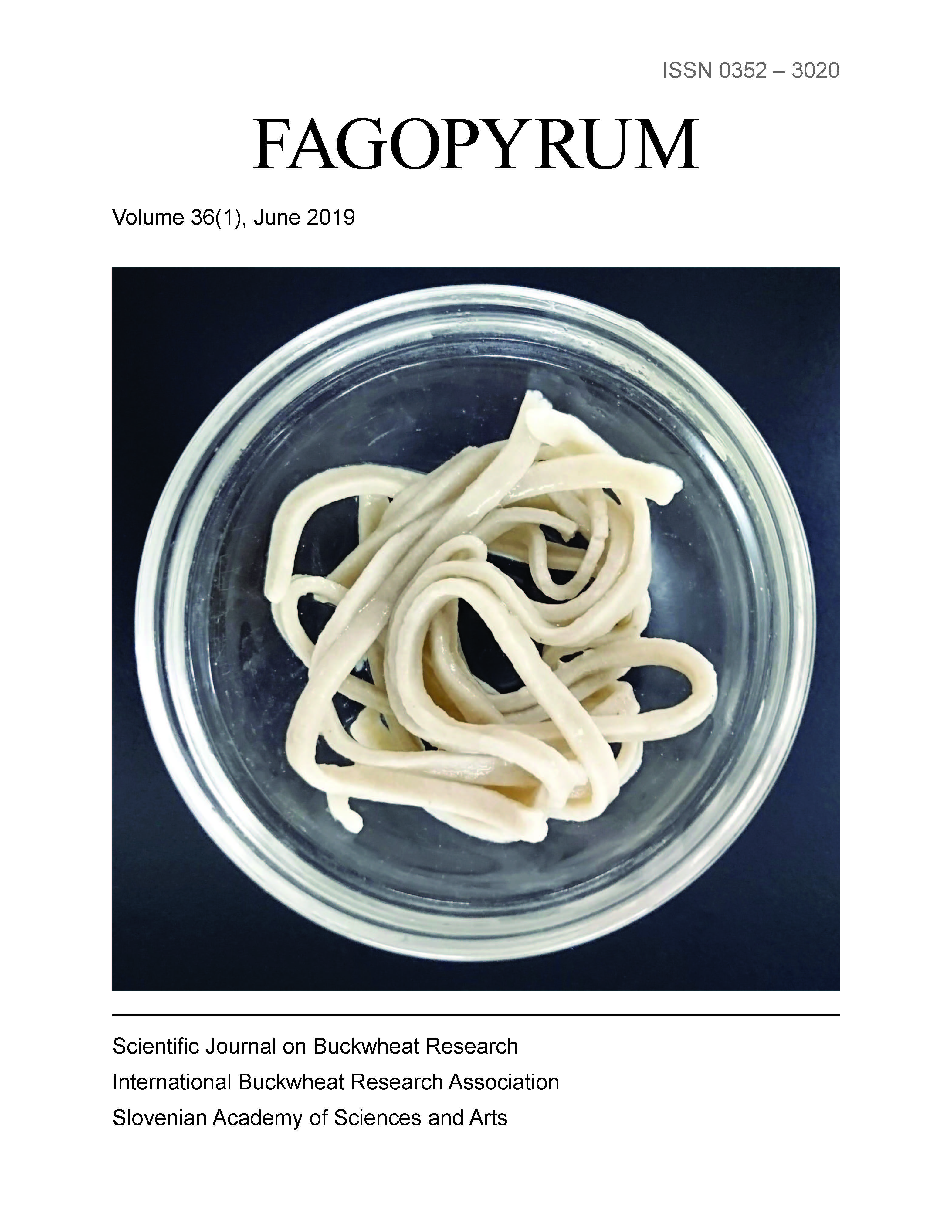Non-destructive methodology in comparative physiology of buckwheat genotypes within the different origin
DOI:
https://doi.org/10.3986/fag0007Abstract
In the presented study has been used non-destructive method for prescreening of flavonoids, anthocyanins and pigments from early stage of growth till flowering period of buckwheat genotypes of different origin. The similar increasingtendency in the changes of FLAV, ANTH and MFI indexes of Chinese genotypes compared to the tendency of Ukrainiangenotypes has been observed. Genotypes of F.tataricumcompared to the genotypes of F.esculentumhave been shownto lower ANTH index during seedling growth.SFR indexwhich relates to chlorophyll concentration shown differentdynamic between Ukrainian and Chinese genotypes. In the middle phase 30 days after sowing (DAS) of growth hasbeen discovered significant increase of SFR index almost in all experimental genotypes. On 36 DAS just two Ukrainiangenotypes which characterized also high ANTH and MFI indexes has been kept tendency to increase SFR index. HPLCanalysis of experimental samples found that presence of p-anisic acid was typical for F.tataricumspecies compared tothe experimental cultivars of F.esculentumof both origin. Buckwheat genotypes of different origin can vary in flavonoid,anthocyanins and pigments content during stages of growth, but changes in their contents can be similar for representatives of the same origin.
Received: March 14, 2019; accepted: May 25, 2019
Keywords: chlorophyll fluorescence, phenolic acid, non-destructive measurement, flavonoids, anthocyanins

